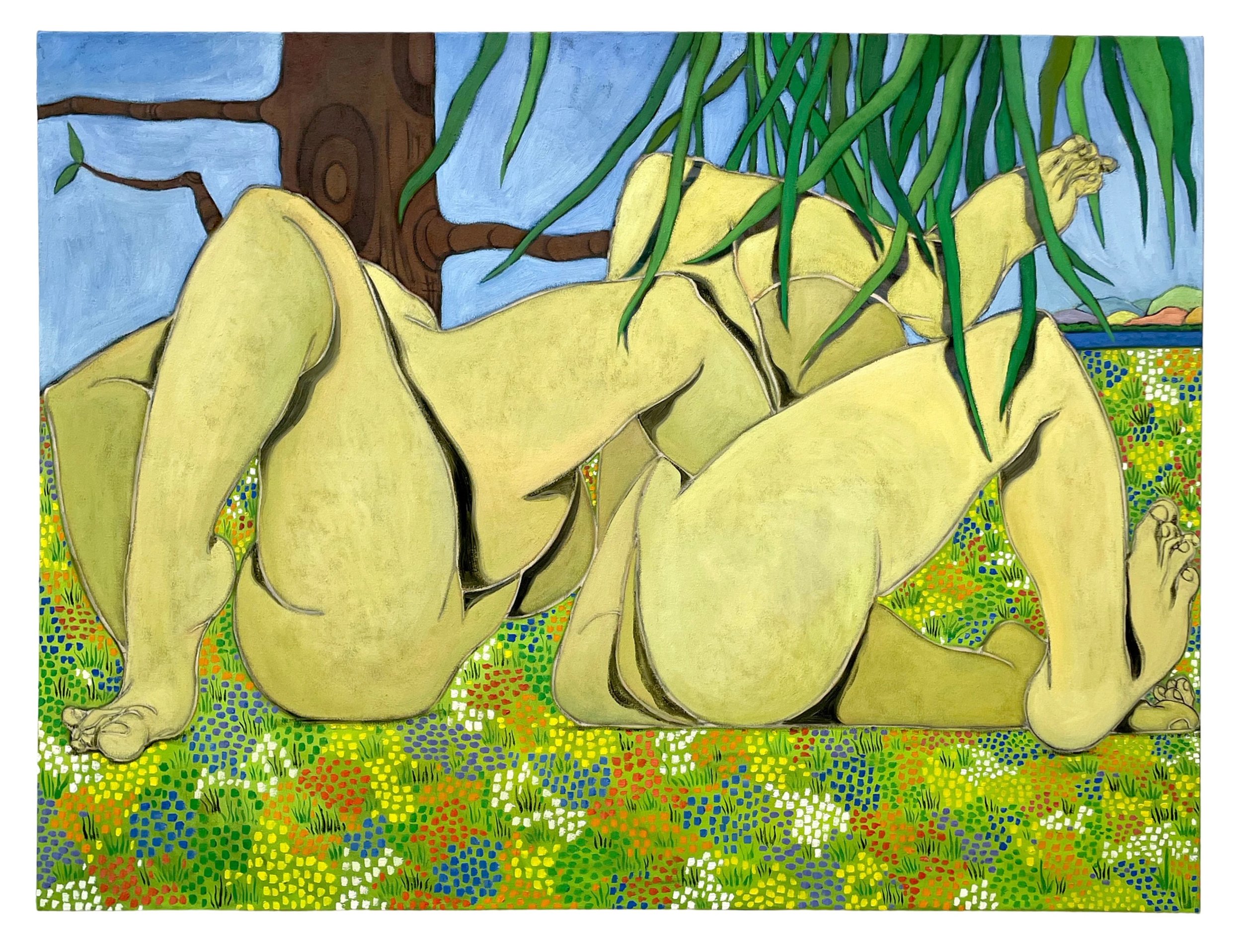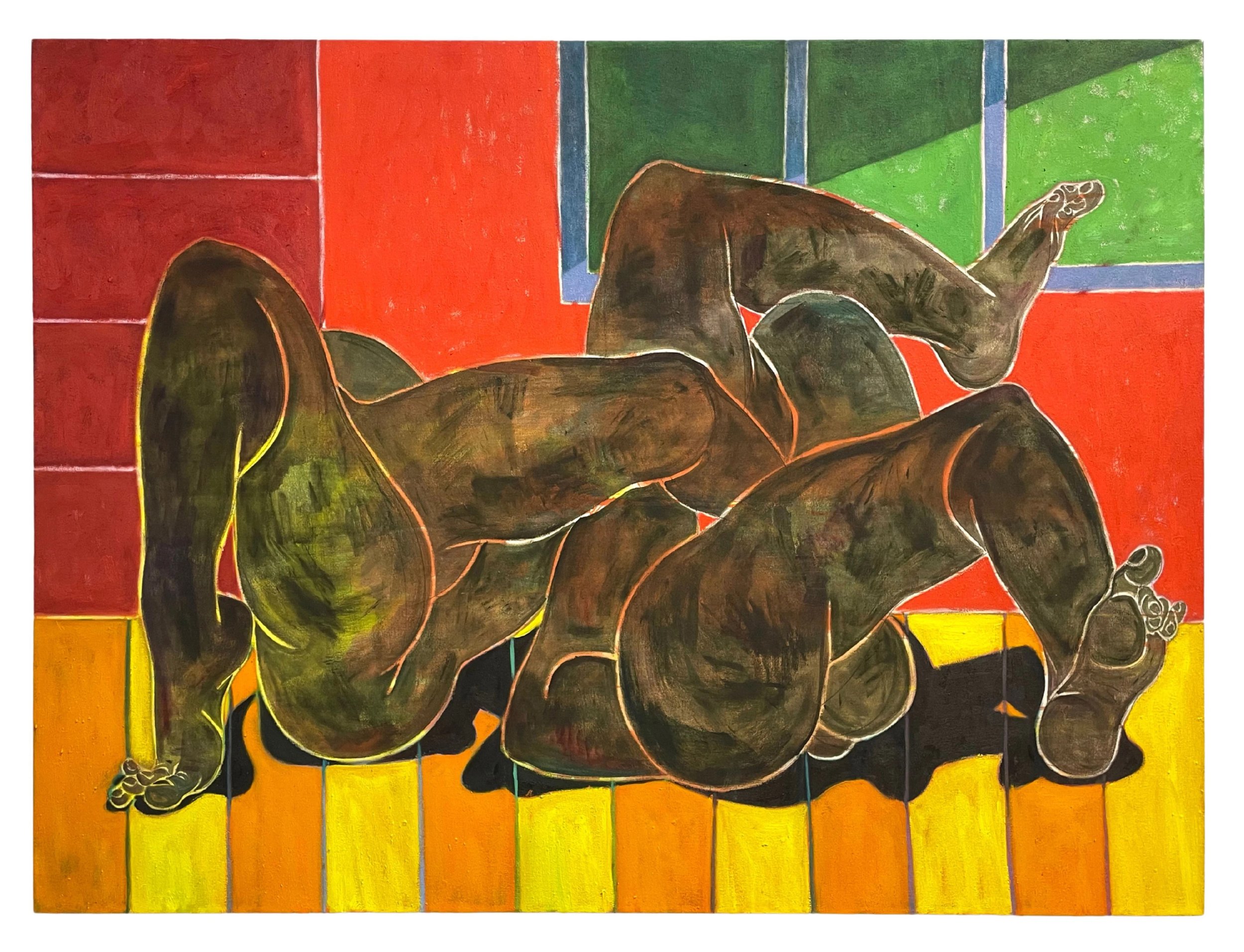Mark Yang: Exploring Vulnerability, Connection, and the Human Body
In recent years, Mark Yang has become a key figure in the AAPI contemporary art scene, with solo exhibitions across the globe—from New York to Beijing and all the way to LA. His work aligns with the current wave of contemporary figuration, focusing on the human body and the complexity of human relationships. This new chapter follows his move to a Yonkers studio and his solo exhibition at the newly opened CLUBHOUSE in Wellington, Florida.
In an exclusive conversation with Critic's Chronicle, Yang shared his thoughts on this exhibition, his creative process, and how his personal journey and art historical references inform his work.
Yang is showing no signs of slowing down any time soon. The artist, who recently moved to a new studio in Yonkers to settle down with his family, describes his art as a dynamic force capable of transformation, much like the environments it inhabits. “Once the art leaves the studio, it’s vulnerable and has to stand on its own,” he said. “Where an artist manifests and makes the work influences its creation, but once it’s out in the world, it’s in conversation with its surroundings.” This perspective of vulnerability is not just theoretical for Yang; it reflects his ongoing evolution as an artist. The works included in his debut solo at CLUBHOUSE, which runs in parallel to a solo show at VSF in Los Angeles, reflect a maturation of his ideas, particularly around the representation of entangled figures. The tension and connection in these bodies continue a long-standing exploration that began in his college years and has evolved significantly over time.
Yang’s work is deeply rooted in a sense of continuity, where every new painting builds upon its predecessors. “The works I’m presenting at CLUBHOUSE are a part of a long continuum of paintings I began making since college,” he explained. “Even when I’m not painting, I spend a lot of time sketching and doodling. It’s these drawings that often spark new ideas for paintings.” The latest series shifts from earlier explorations of large blocks of color to a more detailed and experimental approach to space and paint application. Stripes, vibrant color clusters, and thick layers of paint define the current works, as Yang experiments with the interplay of thin and thick glazes that create a vibrant, dynamic texture on the canvas.
A consistent theme in Yang’s work is the exploration of the human figure—often entangled and ambiguous—through a lens of vulnerability and connection. His latest paintings continue this exploration, though with an added complexity. "I’ve always been drawn to the human body not to specify gender but to use it as a vessel for my paintings,” he says. This body is treated as a fiction, a reflection of his own experiences rather than a representation of a specific gender. Yang’s figures—fluid, formless, and at times ambiguous—reflect a world where gender is not the defining aspect of identity but rather one element within a broader exploration of form and movement.
In his recent work, Yang has shifted focus to the lower limbs, especially feet and legs, a recurring motif that has intrigued him for years. "I’ve always been more interested in rhythm and movement than in portraiture," he said. "The lower limbs, with their strong, curved forms, evoke a sense of balance, tension, and movement. I’m fascinated by how the body moves, and I find tranquility in the roundness of certain forms, especially in sculptures from the Renaissance." This love for anatomy, coupled with a playful use of abstraction, helps Yang to create paintings that not only depict the human figure but also evoke emotion and sensation through their physicality.
Yang’s paintings are rich in art historical references, from the muscularity of Michelangelo’s figures to the fractured forms of Picasso. In particular, his recent works reflect a deep engagement with the Venetian master Giovanni Bellini. "I first saw Bellini’s Madonna and Child paintings at the Galleria dell’Accademia in Venice in 2022," Yang recalled. "His approach to composition and light struck me deeply, especially as I was preparing to become a father. I was fascinated by how he could create variations on the same theme while making each work feel unique." This exploration of repetition and variation is evident in his Bellini series, where he creates multiple variations on a similar motif, imbuing each one with distinct emotional energy. The works in the show, including Bellini VIII (2024-25) and Bellini IX (2025), illustrate some of Bellini’s compositional choices, such as the checkered floor and the use of perspective as a compositional tool. The stark contrast between the architectural ledge that frames the painting and the organic nature of the figures—expressed through their curved limbs—highlights Yang’s interpretation of Bellini’s classical structure, infusing it with his own fluid and dynamic approach.
“The beautiful nature of art is their potential to change. Where an artist manifests and makes the work could influence the making. Once the art leaves the studio, it’s prone to vulnerability and has to stand on its own within its habitat.”
The shift in his personal life, including his move to Yonkers and the transition into fatherhood, has brought a noticeable depth to his recent works. These changes have led to an increased focus on the environment, introducing elements like trees and flowers, though Yang resists assigning them to specific locations. “I like to think of them as a part of my visual vocabulary rather than a specific location to convey,” he says. This tension between abstraction and representation is at the heart of his current practice, and these new works explore the complexities of how we see and experience the world around us. In Picnic with a Sculpture (2024-25), for example, we see a hint of a landscape with a tree hovering over the human-like figures that lay across grass and flora. This surreal juxtaposition of the organic and the abstract adds another layer to Yang’s exploration of space and identity.
Over the years, Yang has experimented with different techniques and materials, most recently incorporating staining techniques inspired by artists like Helen Frankenthaler. "In art school, I was taught to paint on white gessoed surfaces, but I found the raw canvas so appealing," he said. "By using rabbit-skin glue and oil paint, I can let the paint move more freely across the surface, creating a looser, more experimental quality." The result is a heightened engagement with the texture of the canvas and a greater freedom in his approach to color, further enhancing the physicality of his work.
Yang’s work sits within a larger contemporary dialogue about the body, identity, and abstraction. Artists such as Luchita Hurtado, Joan Semmel, and Jenny Saville have similarly explored the body’s vulnerabilities, desires, and contradictions, and Yang sees himself as part of this ongoing conversation. "I don’t think about these artists consciously when I work, but over time I’ve realized that we share a common interest in using the body as a vehicle for self-expression," he said.
At CLUBHOUSE, Yang continues to explore the themes of movement, identity, and form, presenting three pairs of paintings that evolve from shared origins into distinct expressions. “I see these works as siblings rather than opposites. They share a foundation but evolve in different directions.”
Mark Yang’s solo exhibition is on view at CLUBHOUSE through April 9, 2025.





